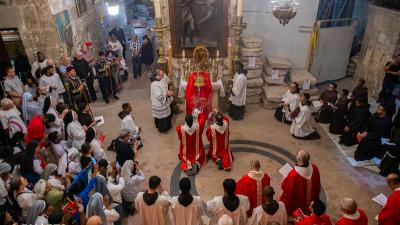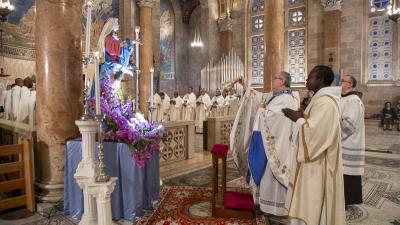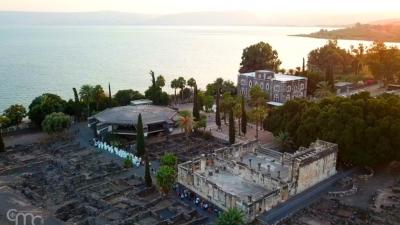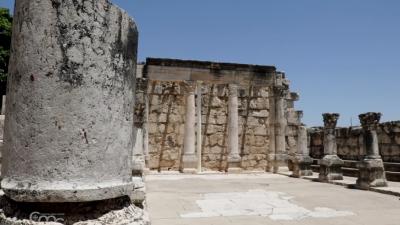
The annual feast-day of the shrine was celebrated on 13 October in Capernaum (Kfar Nahum), where the presence, the preaching and the miracles performed by Jesus are remembered. It was here that he spent a great part of his public life. He “came to live in Capernaum,” the evangelist Matthew wrote, suggesting that this had become his city of adoption, to the extent that it was called “the city of Jesus.”.
Simplicity and solemnity
This year, the peregrination took place in a semi-private form: there were no local faithful or pilgrims, due to the situation of war. As far as the friars are concerned only those who live in the various shrines and convents in Galilee took part, and the nuns who work with the Franciscans in Capernaum were present. “The liturgy was simple and familiar, but at the same time great care was given to it and it had the right solemnity,” the Custos of the Holy Land, Fra Francesco Patton, said, who presided over the celebration and is on a fraternal visit to the Galilee community.

The peregrination was held in the usual way: the reading of the miraculous catch and of the call of the first disciples along the sea short and then, singing, the procession to the shrine, where the Mass was celebrated.
This is also the occasion when, after communion, the fruits of the land are blessed and distributed. “This time, however,” the Custos says, “because of the war situation, we did not bless the fruit but we recited a special prayer for peace, taken from the Roman Missal.”
“Staing,” the form of Franciscan testimony

In his homily, the Custos recalled “the importance of staying in the Holy Places, especially in times of difficulty.” Pope Clement VI himself, in 1342, the year the Custody of the Holy Land was founded, “asked the friars to live in the Holy Places, to celebrate Sung Masses and Divine Offices and to be an international fraternity.”
The Custos underlined how this has been and is particularly important at the most difficult times in history: “We remain in the Holy Places, we celebrate and we pray in the Holy Places because this way the Grace of the place continues to speak and to flow inside history. We are present, at this celebration as well, from many parts of the world and this way we represent both the pilgrims who cannot come and the universal dimension of the Church.”

Mass was followed by a fraternal lunch, during which the friars of the various communities were able to enjoy the time together, speak, talk of what they are experiencing and share their worries. “There are also the thoughts for our confrères who are in a similar situation on the other side of the border, in Lebanon,” the Custos said. “Our being on both sides of the frontiers makes us feel even more the need to pray for peace.”
Marinella Bandini







